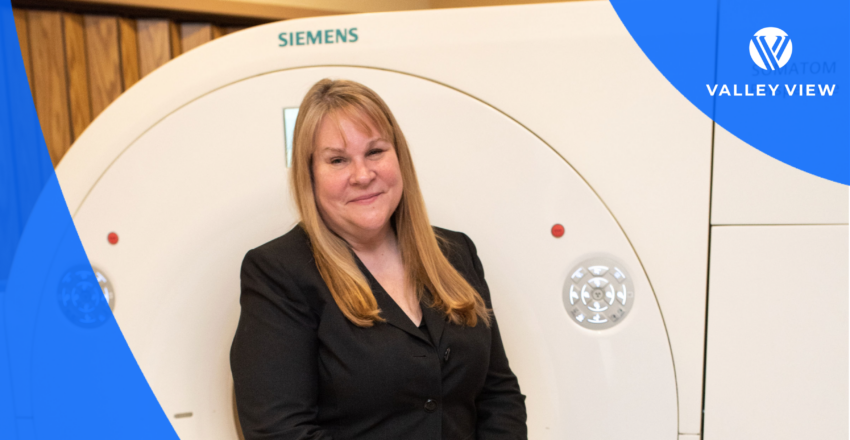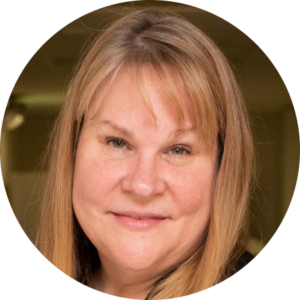Big Savings, Bigger Impact at University of Rochester Medical Center
March 12, 2025
Read More
Valley View staff used PowerShare to share imaging records, but they could not easily share records with out-of-network providers, and patients who wanted copies of their imaging received them on CDs.
Valley View wanted to offer patients an image-sharing platform that enabled them to share records with out-of-network providers. At the time, the Colorado facility was using PowerShare for providers, but this was not a patient-friendly platform. That meant patients could not access, store and share their own medical imaging records easily.
“With PowerShare, it takes time to set up new hospital users in the system and patients are often personally requesting imaging on CDs for appointments with providers that are today or tomorrow morning. This means we needed a solution that allowed for more immediate sharing,” says Lynn Imel, Director of Imaging at Valley View, who saw how these inefficiencies disrupted radiology workflows and patient care.
Even with an image sharing system in place, Valley View was still burning about 10 to 24 CDs per day – a sizable volume for a community-based hospital network.
Valley View’s location makes its patient base unique – the hospital is situated in the Colorado Rocky Mountains, near popular ski resorts, national parks and hot springs. As a result, the network sees many out-of-town patients who want to share their records electronically with providers back home. But Valley View could only carry out hospital-to-hospital transfers with facilities on the PowerShare network and didn’t have patient sharing capabilities. Without the ability to share with out-of-network providers, patients were requesting CDs, creating more work for administrative staff.
Prior to implementing PocketHealth, Lynn recalls her team looking into the PowerShare patient sharing function, but identified process issues early on. “The directions for patients were three pages long,” she says. “When my PACS manager himself tried to use the sharing function as a patient, he couldn’t do it. And if he couldn’t do it, it was highly unlikely a patient could have success with this image sharing process.”

Valley View adopted PocketHealth, giving them flexibility and freedom to share imaging with out-of-network providers.
While attending the annual meeting for Association for Medical Imaging Management (AHRA) in 2018, Lynn met PocketHealth co-founders, Rishi and Harsh Nayyar. Lynn was impressed by their conversation and was eager to know more about the user-friendly, patient-centered platform. “The product was super interesting and super easy to me.”
After Lynn got IT on board, the implementation was a fast and easy lift for them. “PocketHealth was extraordinary in making sure that things were done that needed to be done, and we had very little IT staff hours involved. It was very simple, especially in comparison to other projects that I’ve taken on.” While some IT projects take six months to a year to implement, it only took 30-60 days with PocketHealth.
Valley View continues to use PowerShare while offering PocketHealth, but according to Lynn, the two platforms serve different purposes. “They’re both necessary to the hospital’s day-to-day imaging workflow,” she explains. “PowerShare is for the routine image sharing by providers who are already using it and are familiar with the technology, but there’s also image sharing that we do with physicians and providers from all over the world.” With that, Valley View chose PocketHealth to fill a gap in PowerShare’s capabilities that patients were missing.
It was also important for Lynn and her team to make sure providers adequately explained and promoted the benefits of PocketHealth to patients. “We make it as positive as possible by saying ‘we have this great new way to get your images. You don’t even have to come in, we’ll do it all online and you can save and share them however you want.’”

Valley View saved costs and and dramatically reduced the number of CDs
The imaging department at Valley View needed a solution that could meet their clinical and operational standards for patient-centered care. PocketHealth met those standards and raised them. Particularly, patients with out-of-network providers have more portability in their imaging records and can share with their care team from anywhere.
“We have people from all over the world who are able to share their information with their providers, no matter where they’re at, because of PocketHealth.”
Valley View is also on the road to going CD-free – they’ve eliminated their service contracts for the disk burning hardware. Non labor costs associated with burning disks dropped by 95%, and the number of CDs, along with staff time associated with these efforts, decreased by 90%, freeing them up to focus on other tasks. The few patients that are still requesting CDs are mostly older adults who find them more accessible and easier to navigate.
Patients are thrilled to gain access to their studies and share them with providers. “They appreciate having everything at their fingertips on their own computers,” says Lynn. “They have the power to do what they want with their images, and they like it.”
Carrying two systems, like PocketHealth and PowerShare, takes coordination, but it’s a worthwhile endeavor for a hospital like Valley View who has a patient base with diverse needs when it comes to imaging.
Lynn added, “We are not only delivering the highest quality of care to our local community by transferring records to facilities in our network, but we can also give records to patients themselves to ensure continuity of care after visiting our region.”